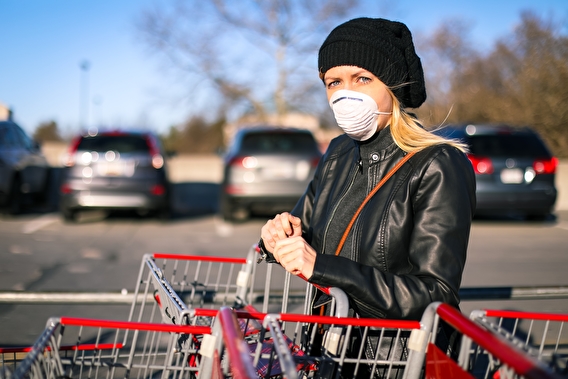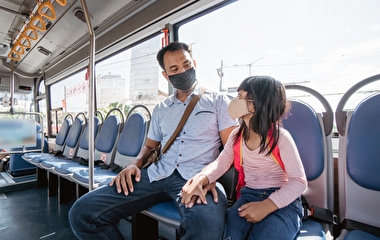
Modeling the spread of the COVID-19 pandemic is a critical part of controlling it. Previous models based on movement patterns have mainly used long-distance travel to predict the spread of the virus, but new research is looking to include short-distance commutes as well.
Raphael Stern and Michael Levin, assistant professors with the Department of Civil, Environmental, and Geo- Engineering, are part of a research initiative aiming to incorporate short-distance transportation data into viral spread models. They worked in tandem with contacts from Purdue University and the KTH Royal Institute of Technology on the effort.
“Most of the virus-spread models with transportation consider people moving from one place to another,” says Stern, “which may be true if you’re in Minneapolis and get on a plane and go to Chicago. But our question was, ‘What about short-term travel?’”
The model that Stern and Levin came up with started with a basic SIR or SEIR model (Susceptible, Exposed, Infected, Recovered), which uses factors such as “incubation time” and “duration of disease” to predict the rate at which people transition from one of the SEIR categories to the next. Then, using the data aggregator StreetLight, they were able to gather cellphone data on the number of trips people made from county to county in Minnesota.
By adding this travel data to the basic model, Stern and Levin were able to create a new set of predictions for the spread of the virus. To check their work, they used travel data from known points in the pandemic: the Minnesota stay-at-home order, the limited reopening of offices, the stay-at-home expiration, and the restricted reopening of businesses and restaurants. They then compared the resulting pattern with actual case numbers.
“The predicted model is actually quite good at capturing the virus spread,” Stern says. “It’s particularly good, we think, because it’s incorporating these additional trips.”
Knowing this, Stern and Levin were able to make some projections based on different scenarios. When they ran the model at the end of the summer of 2020, it predicted a peak of around 70,000 active infections by September if travel habits reverted back to pre-COVID levels—the worst-case scenario. If travel were utterly cut off, by contrast—which is unlikely since it has severe economic ramifications—the model predicted a peak of 30,000 active cases in August.
There are, however, limitations to the predictive capabilities of the model, Stern says. It makes assumptions about the willingness of the population to stay in quarantine, and the recent case surge was not predicted.
“These estimates clearly don’t take into account the ‘COVID fatigue’ that set in, with people engaging in more risky behavior,” Stern says.
Short-term travel behavior does, however, remain a significant factor in the spread of the virus. “By incorporating travel into this equation,” Stern says, “we really do get a substantially better model.”
Stern presented the research at the CTS Research Conference on November 5.
Writer: Sophia Koch


